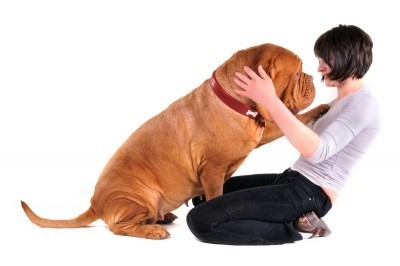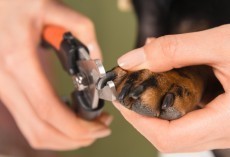It's all about the walks, my friend!
If exercise isn't your thing start slow and build up to taking Fido on a few 15-20 minute walks daily. Not only will it help your pup lose weight, but if you're struggling with staying healthy it can help you lose some poundage too.
You want your pup to stay around for years to come, so commit to helping him be a healthy pooch and you'll both enjoy the benefits.
For a solid weight loss program, you should educate yourself on the right gear you'll both need during your walks. For example, find a harness that won't tug on your pup — it's important to keep him safe and comfortable with a step in harness while getting him back in shape!
A soon-to-be-released study by the Association of Pet Obesity Prevention shows that 45 percent of dogs are overweight, including 9 percent who are obese, according to Ernie Ward, DVM, president of the association.
Reflecting the owner's lifestyle
Mojo, who lives in Palo Alto, Calif., isn't a big exercise fan. In fact, he's a bit of a couch potato, said his owner, Sherrie Rose Maleson.With Maleson's help, Mojo is working on his weight problem and has largely succeeded through diet and exercise. He has dropped 30 pounds and has another five to eight to go.
Maleson worked with a dog trainer to learn how to persuade Mojo to go for walks. She said she now takes the reluctant exerciser on hour-long walks every day.
Exercise walking vs. ‘social walking'
Ward said dogs and their owners need to learn how to separate walking for exercise from “social walking.”
“When people take their dogs out for social walks, we find they typically do about an 18-22 minute per mile pace,” he said.“Walking for weight loss is different. We really need to get them into that aerobic heart rate zone. We don't really tell people to measure heart rates on their dog, but we can tell them if it's anything more than a 15-a-minute-per-mile pace, they're probably not walking (for weight loss). A 15-minute-per-mile walk for a person feels like a good, brisk, steady walk.”
Gearing up for a walk
Ward offers the following tips:
• Get the right gear. Forget about the traditional leash and collar. Collars can compress the windpipe when pulled, causing difficulty breathing or even injury.
• Head halters are a great way to train dogs to heel during a brisk walk and pay attention.
• For winter walks in cold climates, booties make sense. In temperatures above 80 to 85 degrees, or on walks longer than 30 minutes, bring along a portable water bottle for dogs.
• Draw your dog close on his leash, generally within two to four feet on the side away from the street, and set off at a pace you feel comfortable sustaining. It should feel brisk and you should break a light sweat.
• Ward recommends half hour walks seven days a week.
Jacobson thinks that the exercise helps Chopper “continue having fun and maintain a happy demeanor, and I believe this will help him live longer… a happy owner creates a happy dog.”
So as you can see from Web Vet, caring for your pup and helping him maintain a healthy weight takes dedication, so do not take your job as a pet owner lightly. Your pooch relies on you for a lot of things, but his health is of the utmost importance! With that being said, it's time to go on a walk right now!









